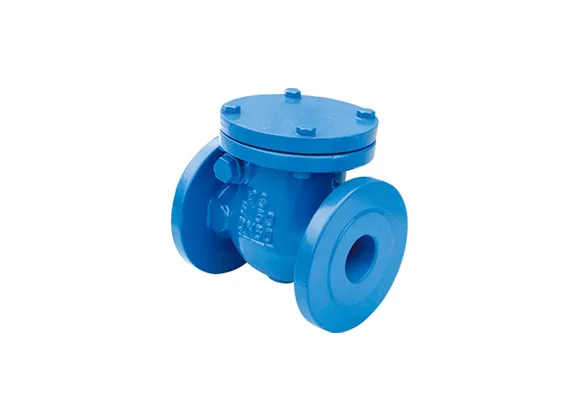Nov . 22, 2024 14:30
Water hammer, a common issue in fluid systems, occurs when there’s a sudden change in the flow, creating shock waves that can lead to pipe damage, equipment failure, and noise. One effective solution to minimize water hammer and enhance system stability is through the strategic use of a flanged swing check valve.

A flanged swing check valve is specifically designed to allow fluid to flow in only one direction. Its hinged disc mechanism, combined with a flanged connection, enables it to close promptly when flow reverses, which is critical in preventing the sudden shifts that cause water hammer. Unlike other types of valves, a flange insert check valve can close without requiring a strong backflow, helping to avoid rapid shifts in pressure.
When placed strategically within a system, a flange mount check valve helps control flow stability, cushioning any abrupt changes. This can significantly reduce the chances of water hammer while enhancing the resilience and longevity of the piping and equipment connected to the valve.
Correct placement of a wafer check valve flanged or flanged swing check valve is crucial for minimizing water hammer. Ideally, these valves should be positioned close to the pump or at specific points where flow velocity changes. By installing the flanged swing check valve in these key locations, it can rapidly respond to shifts in flow, reducing the risk of shock waves.
In addition to proximity to pumps, installing a flange mount check valve downstream can prevent backflow while creating a smoother flow transition. By carefully assessing the flow patterns and adjusting the placement, operators can reduce the intensity and frequency of water hammer, thereby protecting the overall system.
Proper installation is essential to ensure a flange insert check valve performs effectively in reducing water hammer. During installation, ensure the valve is aligned with the flow direction, as reversing it can compromise its ability to close properly. An incorrectly installed flanged swing check valve may lead to delayed closing, which can increase the risk of water hammer rather than reducing it.
When installing a wafer check valve flanged, make sure to use appropriate gaskets to ensure a tight, leak-free connection. Even minor leaks around the flange can result in inconsistent flow, which may lead to issues like cavitation and turbulence, further increasing the risk of water hammer. A secure seal will help the valve perform optimally, ensuring it closes swiftly to prevent backflow.
Different valve types offer various levels of control over water hammer, with flanged swing check valves providing specific advantages in many applications. Compared to ball or globe valves, flanged swing check valves and flange mount check valves are more responsive to backflow, making them ideal for preventing sudden pressure changes.
While some systems may benefit from spring-loaded designs, the wafer check valve flanged offers an efficient and space-saving alternative for systems with limited room. Additionally, these valves tend to have a longer lifespan, making them cost-effective for long-term use. By choosing a flanged swing check valve, operators can benefit from both reliability and reduced water hammer without compromising on system efficiency.
Regular maintenance is essential to keep a flanged swing check valve functioning optimally over time. Inspecting the flange check connection for signs of wear, corrosion, or debris buildup can help avoid common issues that may reduce its effectiveness. Cleaning the valve periodically, especially in high-debris systems, will help prevent obstructions that could affect its ability to close smoothly, which is crucial for minimizing water hammer.
Additionally, check for any loosened bolts around the flange mount check valve as system vibrations can affect the stability of the flanged connection over time. Addressing these minor issues can go a long way in extending the life of the valve and ensuring it continues to effectively prevent water hammer in the system.
Through proper use of flanged swing check valves, facilities can not only reduce wear and tear but also avoid costly repairs and downtime associated with water hammer damage. By implementing best practices, operators can ensure a smoother, more resilient system that runs efficiently over time.
Related Products
 Call us on:
+86-311-86935302
+86-311-86935302
Call us on:
+86-311-86935302
+86-311-86935302
 Email Us:
info@thriveonvalve.com
Email Us:
info@thriveonvalve.com South of Huanmadian Village Town, Ningjin County, Xingtai, Hebei Province, China
South of Huanmadian Village Town, Ningjin County, Xingtai, Hebei Province, China